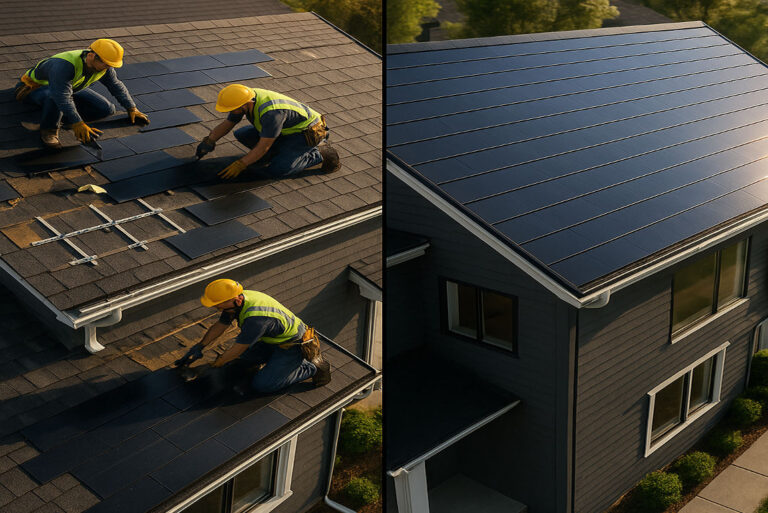Imagine transforming your home into a powerhouse of energy efficiency while giving it a brand-new look. Sounds exciting, right? This is precisely what homeowners achieve by combining roof replacement with solar power.
With the growing interest in sustainability and renewable energy, many people are asking: “Are there house roof replacements that include solar?” The answer is a resounding yes!
Understanding the Need: Why Consider Solar When Replacing Your Roof?
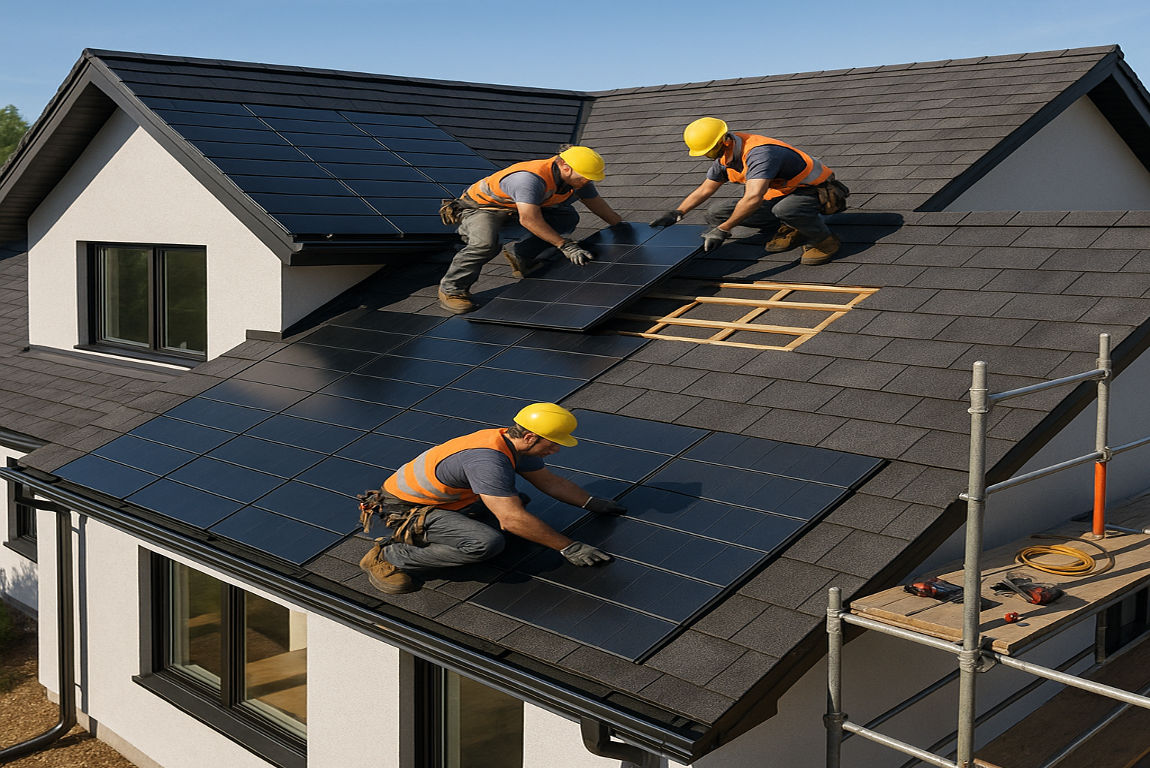
The Lifecycle of a Typical Roof
Most roofs have a lifespan of 20 to 30 years, depending on the material. Over time, exposure to weather, UV rays, and general wear and tear can lead to leaks, cracks, and structural issues. When your roof reaches the end of its life, replacement becomes inevitable.
The Growing Interest in Sustainability
In recent years, homeowners have become more conscious of their environmental impact. Solar energy provides a clean, renewable source of power, reducing reliance on fossil fuels. By integrating solar panels or shingles during a roof replacement, you’re not just upgrading your home—you’re making a statement about sustainability.
Maximizing Efficiency and Value
Combining roof replacement with solar installation is a smart move. It allows you to align the lifespan of your roof with your solar system, ensuring both works efficiently for decades. Additionally, it’s more cost-effective to tackle both projects simultaneously, as it saves on labor and material costs.
Environmental and Financial Benefits
Switching to solar power reduces your carbon footprint and lowers your energy bills. Over time, the savings on electricity can offset the initial investment, making it a win-win for both your wallet and the planet.
Are There House Roof Replacements That Include Solar?
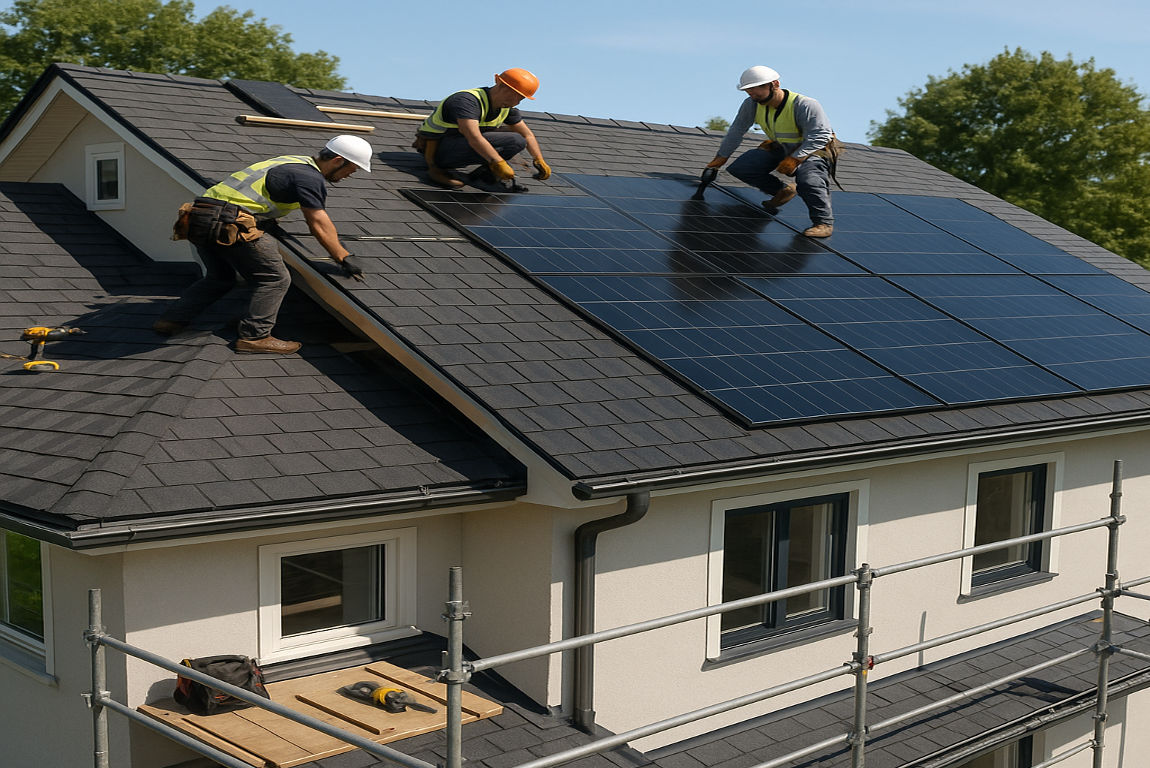
The Short Answer: Yes!
Yes, there are roof replacement options that integrate solar technology. These solutions combine traditional roofing materials with solar panels or solar shingles, creating a seamless and energy-efficient system.
You may also read (how much does it cost to reframe a house roof).
What Does “Solar Roof Replacement” Mean?
A solar roof replacement involves installing a new roof that incorporates solar energy systems. This can take several forms:
- Traditional Roof + Solar Panels: Installing solar panels on top of a new roof.
- Solar Shingles: Roofing materials that double as solar panels.
- Integrated Solar Roofing Systems: Fully integrated systems where the roof itself generates electricity.
Types of Homes and Roofs Best Suited for Solar
Not all roofs are created equal when it comes to solar integration. Homes with ample sunlight exposure, minimal shading, and roofs with a south-facing orientation are ideal. Additionally, materials like asphalt shingles, metal, and tile are particularly solar-friendly.
How the Process Differs from Standard Roof Replacement
Unlike a standard roof replacement, integrating solar requires additional planning and coordination. Structural assessments, solar potential analysis, and collaboration between roofing and solar professionals are essential to ensure a successful project.
Types of Solar Roof Replacements
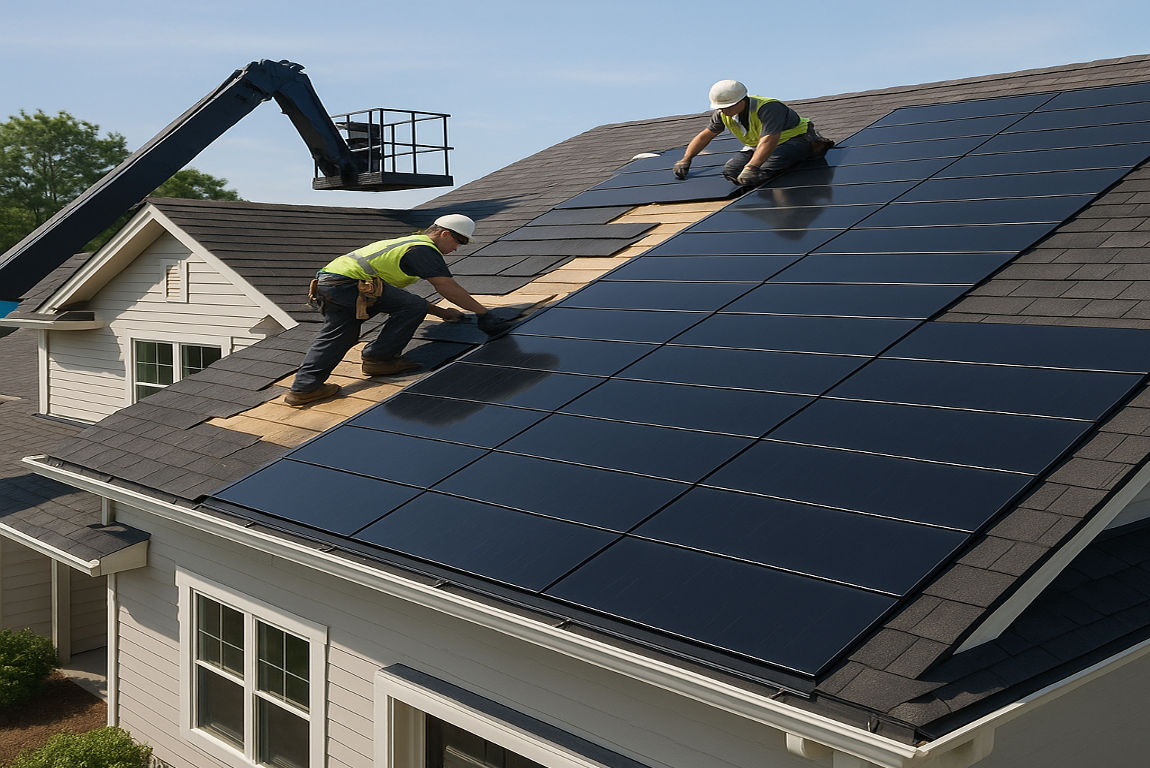
Solar Panel Mounting on New Roofs
This is the most common approach. After replacing your roof, solar panels are mounted on top. Here’s how it works:
- Roofing Materials: Asphalt shingles, metal, and tile roofs are popular choices due to their durability and compatibility with solar panels.
- Installation Process: Panels are secured using mounting brackets, ensuring they stay in place while maximizing sun exposure.
Solar Shingles and Integrated Solar Roofs
Solar shingles are an innovative alternative to traditional panels. They function as both roofing materials and solar energy generators.
- How They Work: Solar shingles capture sunlight and convert it into electricity, just like panels.
- Pros and Cons: While they offer a sleek, modern look, they can be more expensive and less efficient than traditional panels.
- Leading Brands: Companies like Tesla and GAF Energy are at the forefront of solar shingle technology.
Retrofitting Existing Roofs vs. Simultaneous Replacement
Adding solar to an older roof can be challenging. If your roof is nearing the end of its life, it’s better to replace it first. Simultaneous replacement and solar installation ensure both systems align in terms of lifespan and performance.
The Step-by-Step Process: Roof Replacement with Solar Integration
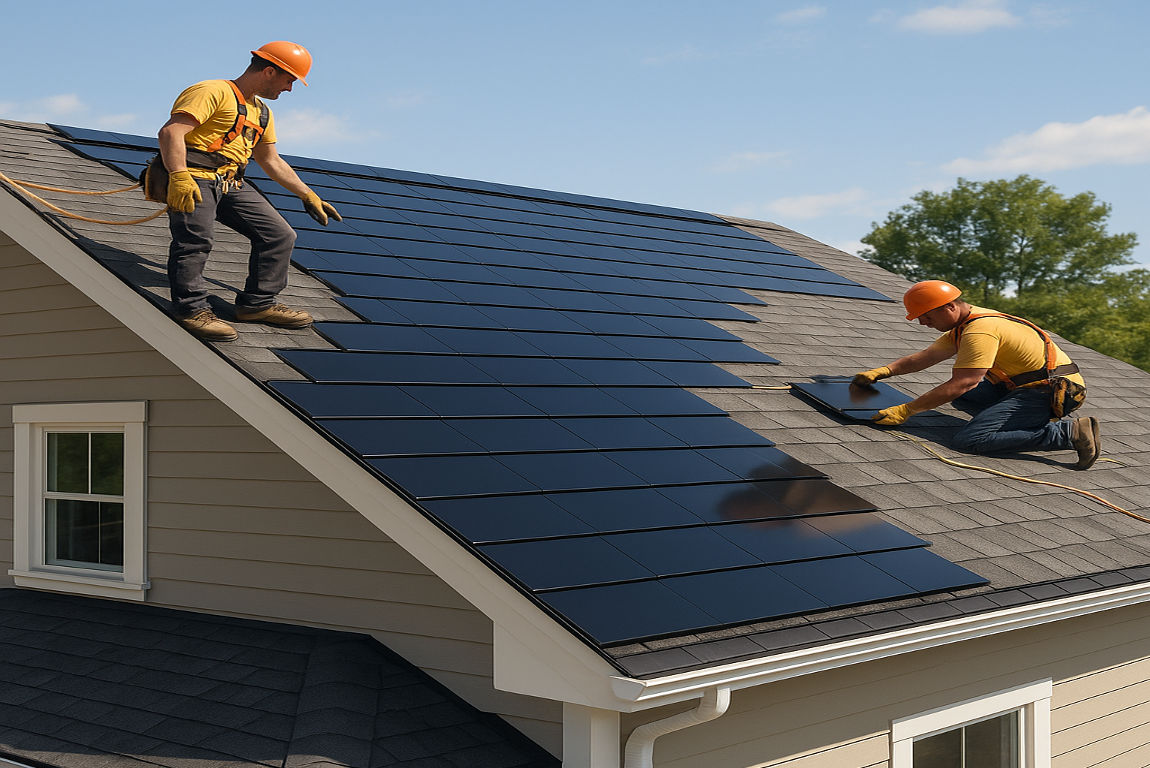
Initial Assessment and Planning
- Roof Inspection: A professional will assess your roof’s condition and structural integrity.
- Solar Potential Analysis: Factors like sun exposure, roof orientation, and local climate are evaluated.
Choosing the Right Roofing Material
Different materials have varying levels of compatibility with solar. Asphalt shingles are cost-effective, while metal roofs offer durability and energy efficiency.
Coordinating with Professionals
Roofing and solar installation require expertise. Collaboration between roofers and solar installers ensures a seamless process.
Timeline and Project Phases
The entire project typically takes a few weeks, including removal of the old roof, installation of the new roof, and solar integration.
Cost Breakdown: What to Expect
ExpenseAverage CostFactors Affecting Cost
Roof Replacement $5,000 – $15,000 Roof size, material, complexity
Solar Installation $10,000 – $30,000 System size, type (panels vs. shingles)
Combined Project Savings 10-20% Reduced labor and material costs
Additional costs may include structural upgrades and the removal and reinstallation of existing solar panels.
Financial Incentives and Savings
Tax Credits and Rebates
The federal solar tax credit allows homeowners to deduct a percentage of their solar installation costs. Many states and utilities also offer rebates and incentives.
Long-Term Savings
Solar power significantly reduces electricity bills. Over time, these savings can offset the initial investment, making solar a financially sound choice.
Key Benefits of Integrating Solar with Roof Replacement
- Streamlined Process: Tackling both projects at once minimizes disruption.
- Enhanced Performance: Aligning the lifespan of your roof and solar system ensures optimal efficiency.
- Increased Home Value: Solar-integrated roofs boost property value and curb appeal.
- Environmental Impact: Reduce your carbon footprint and contribute to a sustainable future.
Common Questions and Concerns
Do Solar Panels Need to Be Removed for Roof Replacement?
Yes, but combining projects eliminates this hassle.
What If My Roof Is Still in Good Condition?
You can still add solar, but ensure your roof has at least 10-15 years of life left.
Choosing the Right Contractor
Look for certified professionals with experience in both roofing and solar installation. Ask for references, check reviews, and ensure they offer warranties.
Case Studies and Real-World Examples
Homeowners across the country are reaping the benefits of solar-integrated roofs. For example, a family in California reduced their energy bills by 70% after installing solar shingles on their roof.
Step-by-Step Checklist for Homeowners
- Assess your roof’s condition.
- Research solar options and incentives.
- Get quotes from contractors.
- Plan and schedule your project.
- Inspect and maintain your new roof and solar system.
Future Trends: The Evolution of Solar Roofing
Advances in solar technology are making systems more efficient and affordable. The future of solar roofing lies in energy-independent homes and sustainable neighborhoods.
You may also read (how to design a parapet house for your home).

